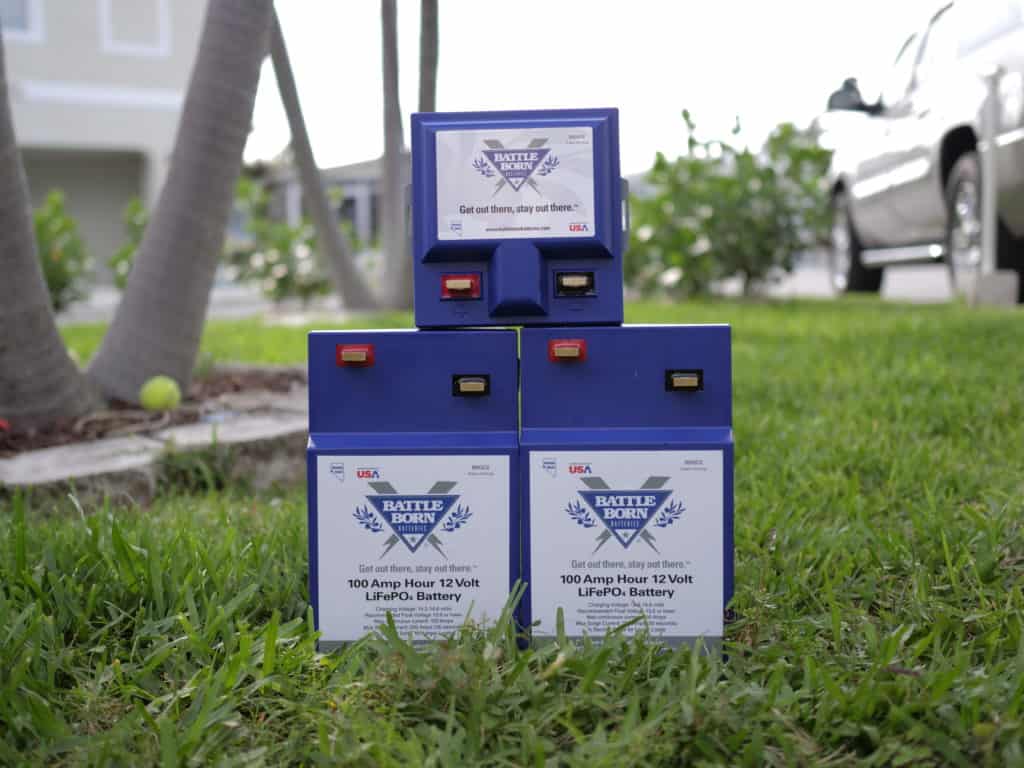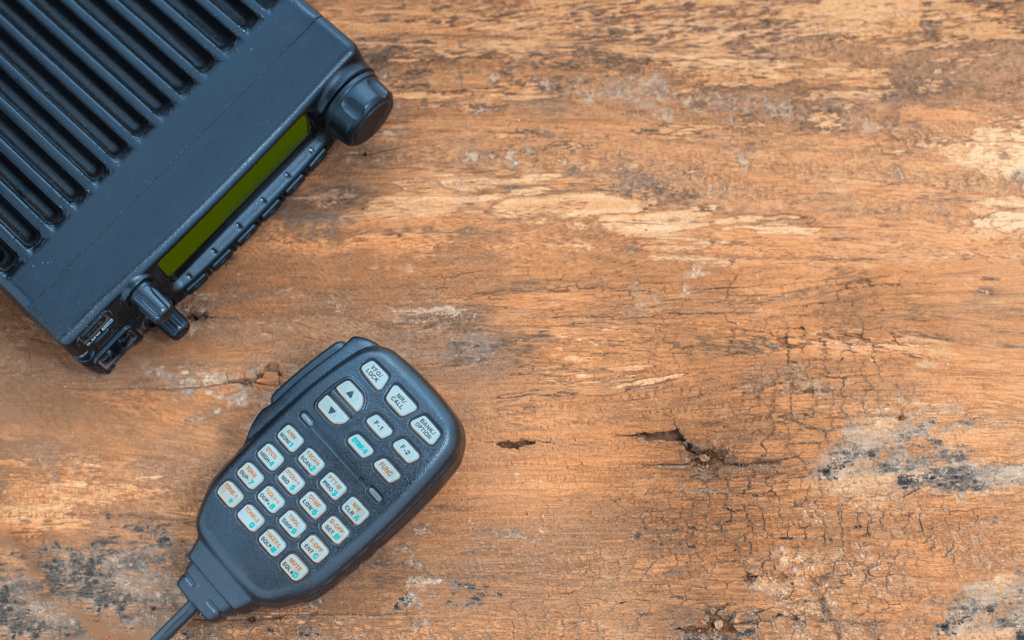Ham radios can sometimes feel like magic. They allow you to travel the world right from your chair by connecting you to people thousands of miles away in exotic places. Sadly, without a reliable ham radio power source, your system won’t take you very far. Enter lithium batteries – an excellent choice for ham radio batteries.
Read on as we take a closer look at how to make the switch!
What Is A Ham Radio?
Ham radios are operated by amateurs and enthusiasts capable of sending and receiving radio broadcasts worldwide. At their most basic, a ham radio system consists of a transmitter, receiver, and antenna. Some setups will opt for a transceiver instead, which combines a receiver and transmitter into one.

The term “ham” originated in the early 20th century as an insult for amateur radio operators but ended up sticking. Certain parts of the radio frequency spectrum are set aside for ham radio operators. Ham radio operators can broadcast non-commercially and communicate with people right across the street or all the way across the globe.
What are Portable Power Source Options for Ham Radio Equipment?
Ham operators broadcasting from home likely have easy access to power by plugging directly into a wall outlet. Most radios need a 12V power supply and can use a converter to plug into household AC power. Those looking for a more portable or backup power setup will need to choose an option for on-the-go power. The most common options are generators, batteries, and solar power.
Gas generators can provide quick, easy power. However, they’re heavy, can be noisy, and may not be reliable. None of these are ideal for ham operators who are on the move.
Solar is a great option that’s growing in popularity due to the rising interest in off-grid setups. As the name implies, solar power systems rely on the sun to produce power. Therefore, solar power setups also include a battery system so that you can use your ham radio after the sun goes down. The need for solar panels and batteries makes this one of the most costly options available.
Batteries are an excellent option for powering your ham radio system. 12V ham radio batteries are quiet, portable, and can pair with generators, the power grid, or a solar power system. This flexibility provides a renewable off-grid option that allows you to use your ham radio anywhere, anytime.

What Are The Benefits Of Using A Lithium Battery With Your Ham Radio?
Using batteries to power your portable ham radio system is a great choice to provide a consistent, reliable power source. There are a few different options for ham radio batteries, but the best is the lithium battery. Let’s take a look at the advantages of using a lithium ham radio battery.
Reliability
Once charged, lithium batteries will only lose about 2-3% of their stored energy per month when you are not using them. Therefore, a fully charged battery could be stored for more than two years and still have a charge remaining. This is particularly beneficial for ham operators who may not regularly use their on-the-go system.
Additionally, your lithium ham radio battery will likely last you more than ten years and thousands of charge cycles. Manufacturers like Battle Born offer a 10-year warranty on all of their lithium batteries.
Performs Better at Low Temperatures
All batteries perform better under moderate temperatures. However, as temperatures plunge, the benefits of lithium batteries become apparent as they significantly outperform traditional lead-acid in colder weather. The main restriction on lithium batteries is that they will not typically accept a charge below 32 degrees Fahrenheit. However, at temperatures below freezing, lithium batteries can still discharge and provide power to your ham radio. For example, our lithium batteries can safely provide power at temperatures down to -4 degrees Fahrenheit without causing damage.
Can Be Deeply Discharged Without Damage
Draining traditional 12-volt lead-acid batteries below 50% of their rated capacity causes damage and shortens their life. Luckily, discharging lithium batteries below 80% or more of their capacity will not cause harm. This means that you can power your ham radio for about twice as long using a lithium battery as compared to a traditional lead-acid battery.
Lighter Weight
For a portable ham radio battery, you’ll definitely want to reduce the weight and bulkiness of your setup as much as possible. Lithium batteries don’t have lead plates inside so they weigh about half of what a comparable lead-acid battery would.
What Size Battery Does Your Ham Radio Need?
Everyone’s energy needs are different. The size of your ham radio battery depends on how much current your ham radio draws and how long you plan to operate your ham radio before recharging the battery.
Refer to your user manual to determine how much current your ham radio draws. Keep in mind that ham radios draw a lot more current while transmitting than they do while receiving. Once you know the current needs for your ham radio, you simply multiply the current, in amps, by the number of hours you plan to use your radio to determine your required battery capacity in amp-hours.
This short video has a great explanation of how to perform the calculation:
https://youtube.com/watch?v=rc6SHdtUtR0%3Ffeature%3Doembed%26enablejsapi%3D1%26origin%3Dhttps%3A
How Do You Attach A Lithium Battery To Your Ham Radio?
Modern ham radios operate at 13.8 volts DC, allowing them to be powered directly off a 12-volt battery without requiring a power supply. This makes wiring your ham radio to a 12V lithium battery relatively simple.
The first step is to determine the proper fuse and wire sizes based on the maximum current draw of your ham radio. Make sure to choose a fuse that is rated 20% higher than the maximum current rating on your ham radio or you’ll continually blow a fuse. Use a wire gauge chart to select the proper wire size. If you plan to have a long cable run between your battery and your ham radio, choose a wire that is one or two sizes bigger to minimize the voltage drop. If the voltage drop in your wiring and fuse is too high, your ham radio won’t turn on.
After you’ve selected your fuse and wire, the next step is to connect everything. Connect one end of the first wire to the positive terminal of your battery using a terminal lug and the other end to one side of the fuse block. Connect another wire from the other side of the fuse block to the positive terminal of your ham radio. Lastly, connect a wire from the negative terminal of your ham radio to the negative terminal of your battery. That’s it!

How Do You Charge a Lithium Battery For Your Ham Radio?
Charging lithium batteries requires a dedicated lithium battery charge controller. Charge controllers ensure your lithium batteries receive the proper voltage and current to charge safely and efficiently. If you plan to charge your lithium batteries by plugging them into a standard wall outlet, consider Battle Born’s series of lithium battery chargers. If you’re charging your batteries using a solar panel system, you’ll need a solar charger instead.
Lithium batteries can even be used in vehicles as a dedicated power source that will not drain the starting battery system. They can be charged from the vehicle’s alternator, but it’s suggested to use a DC-DC converter to provide the proper charge and not overload the alternator.

As always, make sure to consult the owner’s manual for your batteries, charge controller, and other hardware for information on how to install and use everything properly.
Using A Lithium-Ion Power Supply For Reliable Power
Running the power through a lithium battery can be beneficial even when using a ham radio where you have an AC power source. If you are ever to lose AC power, the battery will keep your systems up and running. Using a lithium battery charger will power the battery and provide the energy needed for the radio until the mains power goes down and the battery takes over. For those wanting to use a ham radio as a means of emergency communication having a reliable backup battery power source is critical.

Use 12V Lithium Batteries for Ham Radio Broadcasting On The Go
As you can see, lithium batteries can be a total game-changer for ham operators on the go. Their superior portability, efficiency, reliability, and performance at low temperatures make them an excellent choice for your next ham radio battery.
Happy broadcasting!
